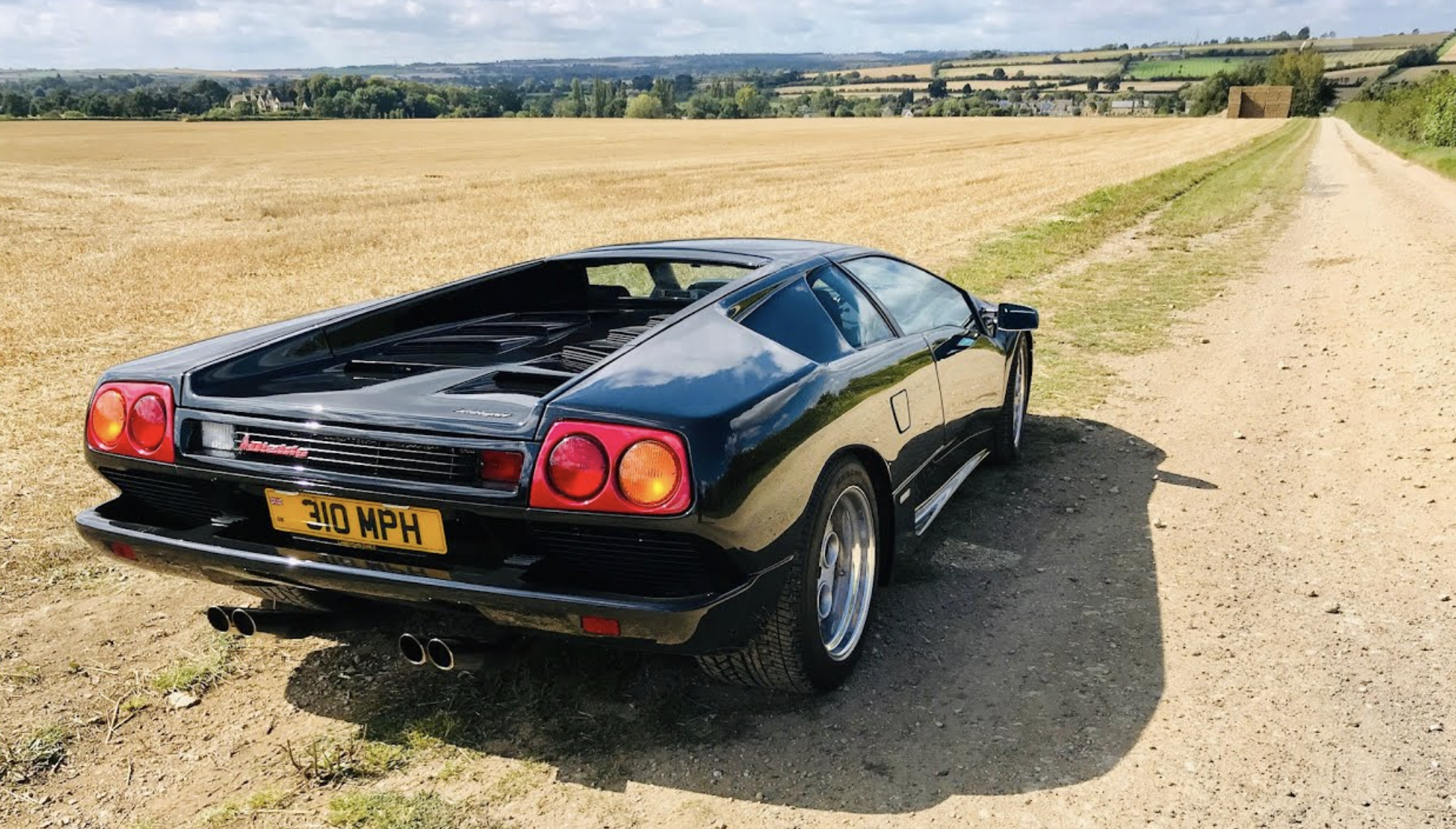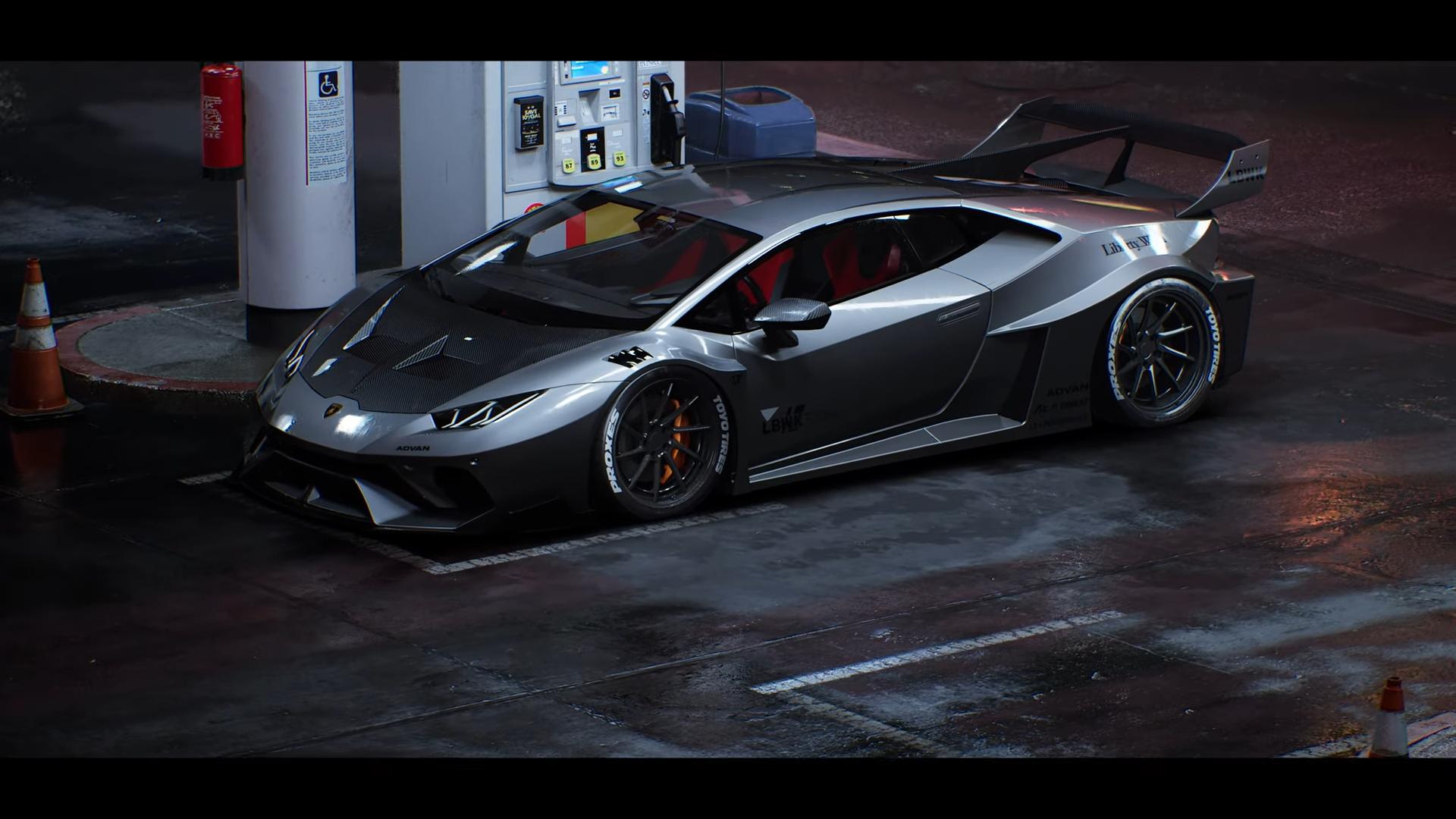The 1990s were an era rich in cinematic and television creativity, a period when audiences were treated to a diverse range of genres and styles. An often overlooked but fascinating aspect of this era’s productions is the inclusion of Lamborghini cars, each model bringing its own story and charm. Let’s delve into some of the notable appearances of Lamborghini models in Movies 90s, exploring not just the vehicles but also their contributions to automotive culture and design.
1. Bird on a Wire (1990): 1968 Lamborghini Islero
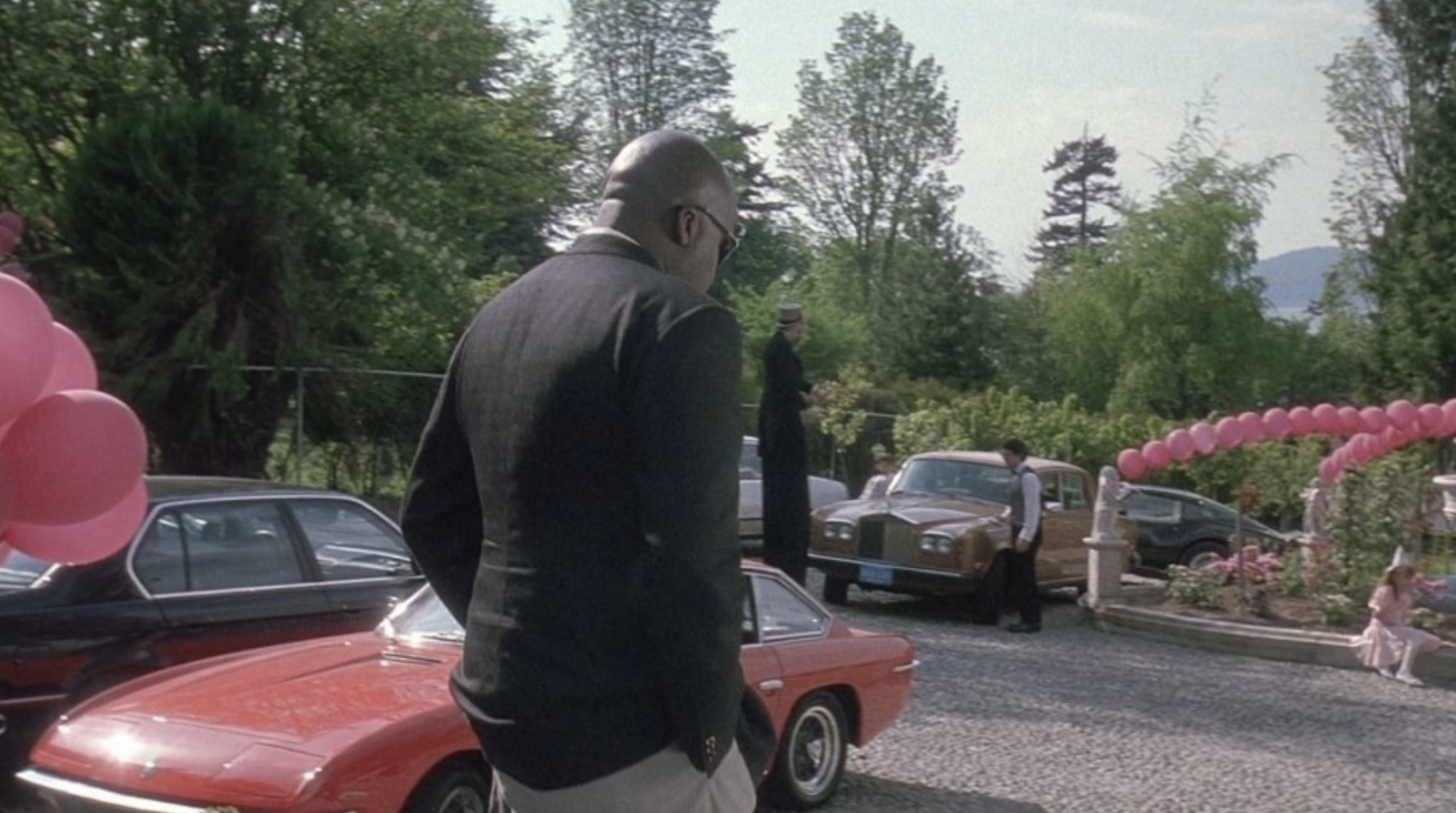
The 1968 Lamborghini Islero, showcased in “Bird on a Wire” not only added a touch of classic Italian flair to the film but also exemplified Lamborghini’s foray into the grand tourer segment during the late 1960s. With its sharp but understated lines, the Islero was an evolution of its predecessor, the 400GT. Carrozzeria Marazzi, stepping in after Carrozzeria Touring ceased operations, designed the Islero. Its understated elegance was a contrast to the more flamboyant Lamborghini models that followed, yet it maintained a dignified, assertive presence.
Underneath the Islero’s hood lay a potent 4.0-liter V12 engine, a continuation of Lamborghini’s preference for high-performance powertrains. This engine was capable of producing around 320 horsepower, a substantial figure for its time, and allowed the Islero to reach top speeds of about 154 mph (248 km/h). With only 125 units produced, the Islero’s rarity adds to its appeal. Its performance and luxury features, including a fully independent suspension, disc brakes on all four wheels, and a lavish interior, make it a memorable and desirable model among collectors and enthusiasts. The Islero’s balanced performance and elegance, combined with its historical significance in the Lamborghini lineage, make it a notable and revered classic.
2. Dark Angel (1990): 1978 Lamborghini Countach LP 400 S
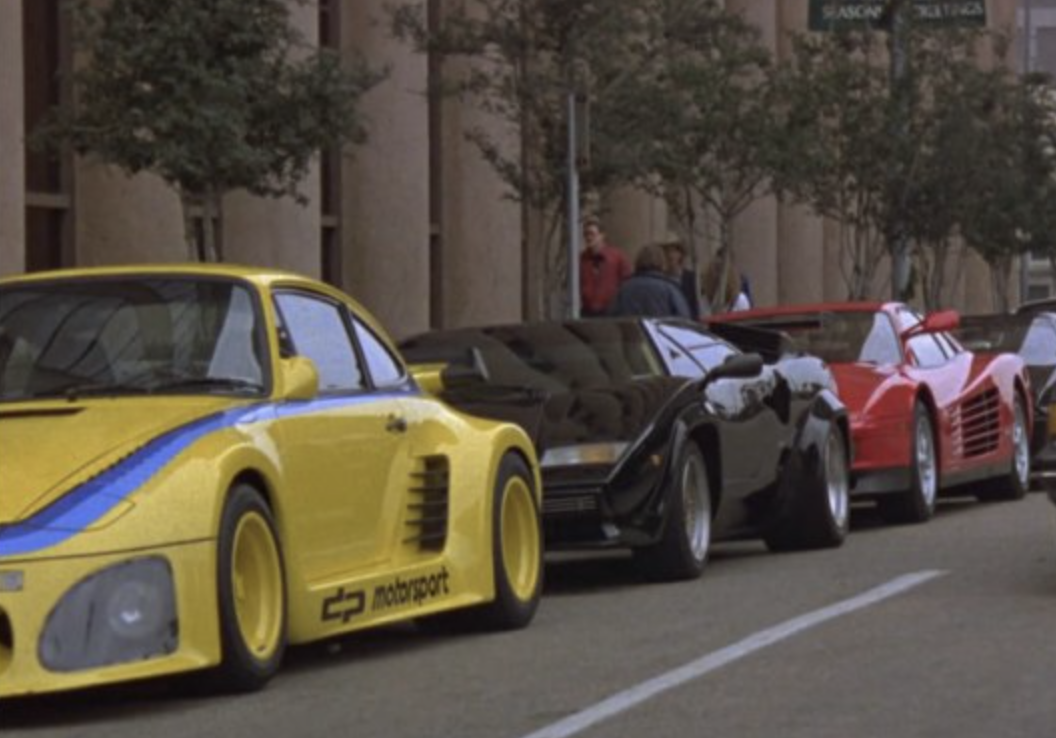
In “Dark Angel” the appearance of the 1978 Lamborghini Countach LP 400 S was more than just a display of automotive prowess; it was a nod to one of the most audacious and forward-thinking designs in sports car history. The Countach, which debuted in the early 70s, broke all conventions with its sharply angled, almost wedge-shaped body, crafted by Marcello Gandini at Bertone. This particular model, the LP 400 S, introduced in 1978, was a refinement of the original Countach LP 400, featuring modifications that gave it an even more aggressive stance and presence.
The LP 400 S variant is distinct for its broad Pirelli P7 tires, which necessitated the addition of fiberglass wheel arch extensions, giving it a more muscular appearance. Under the iconic scissor doors, the car housed a 4-liter V12 engine, a carryover from the original Countach. However, this engine’s delivery was slightly more tame compared to its successors, focusing more on a refined driving experience. It produced about 355 horsepower, which propelled the car to speeds upwards of 180 mph (290 km/h), impressive for its time. The Countach LP 400 S’s raw, mechanical feel, devoid of the electronic aids and assists common in later sports cars, provided a driving experience that was as unfiltered as it was exhilarating. This combination of avant-garde design and remarkable performance not only cemented the Countach’s place in automotive history but also symbolized the bold and innovative spirit of Lamborghini during the era.
3. The Closer (1990): 1985 Lamborghini Countach 5000 QV
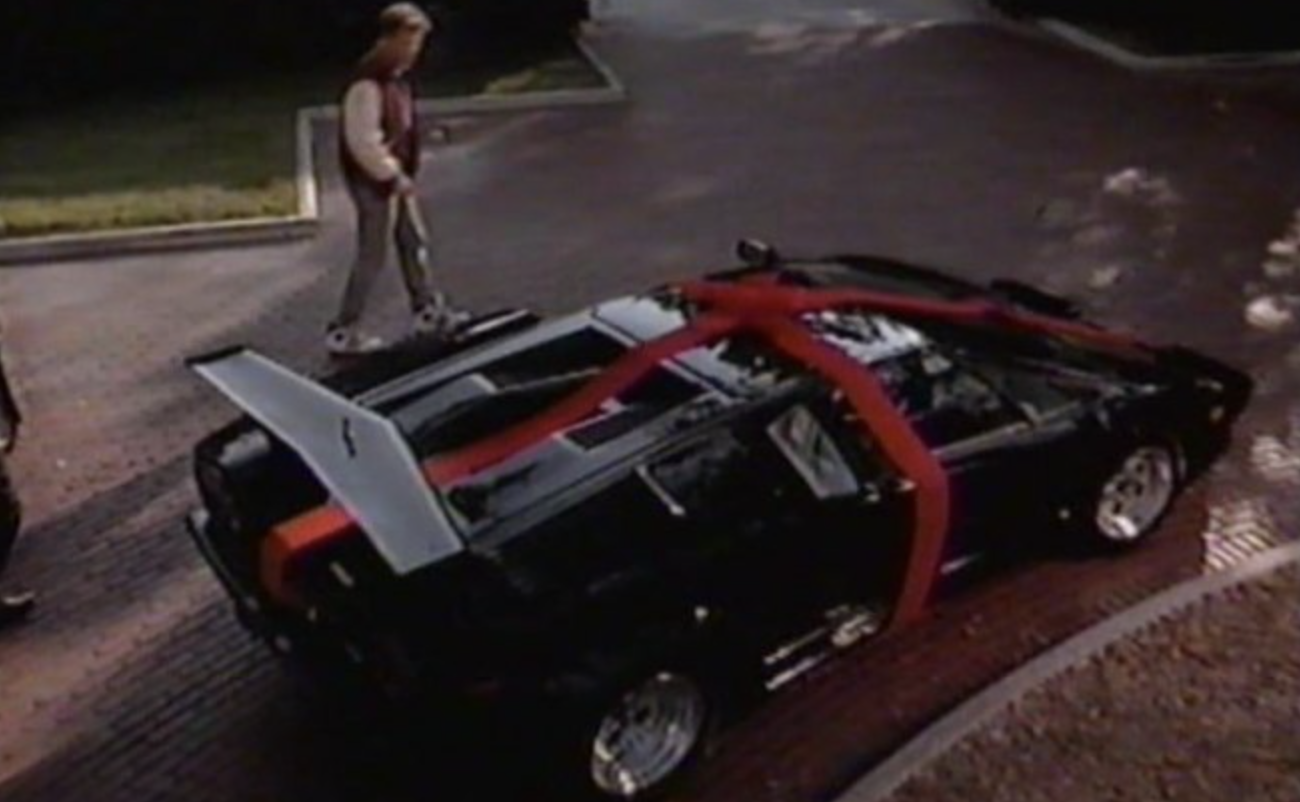
In “The Closer” the 1985 Lamborghini Countach 5000 QV (Quattrovalvole) provided a visual and performance-based spectacle, embodying the quintessence of an 80s supercar. As an evolution of the earlier Countach models, the 5000 QV boasted significant modifications, particularly in its engine and overall performance. The model marked an important development in the Countach lineage, showcasing Lamborghini’s ongoing commitment to innovation and automotive excellence.
Central to the 5000 QV’s allure was its improved power unit – a 5.2-liter V12 engine, equipped with four valves per cylinder, as indicated by the “Quattrovalvole” in its name. This enhancement boosted the engine’s output to around 455 horsepower, a notable increase that enhanced the car’s high-performance capabilities. The 5000 QV could sprint from 0 to 60 mph in about 4.9 seconds and reach a top speed of around 182 mph (293 km/h), numbers that were quite formidable for that era. Externally, the vehicle retained the Countach’s signature scissor doors, aggressive angular design, and NACA ducts, but the 5000 QV version introduced a raised engine cover to accommodate the new, larger engine. The combination of its striking design, mechanical advancements, and adrenaline-inducing performance not only made the Countach 5000 QV a star on screen but also a revered icon in automotive circles. This model exemplified Lamborghini’s mastery of merging art with engineering, crafting vehicles that were as much a joy to drive as they were to behold.
4. The Girl Who Came Late (1992): 1976 Lamborghini Urraco P300
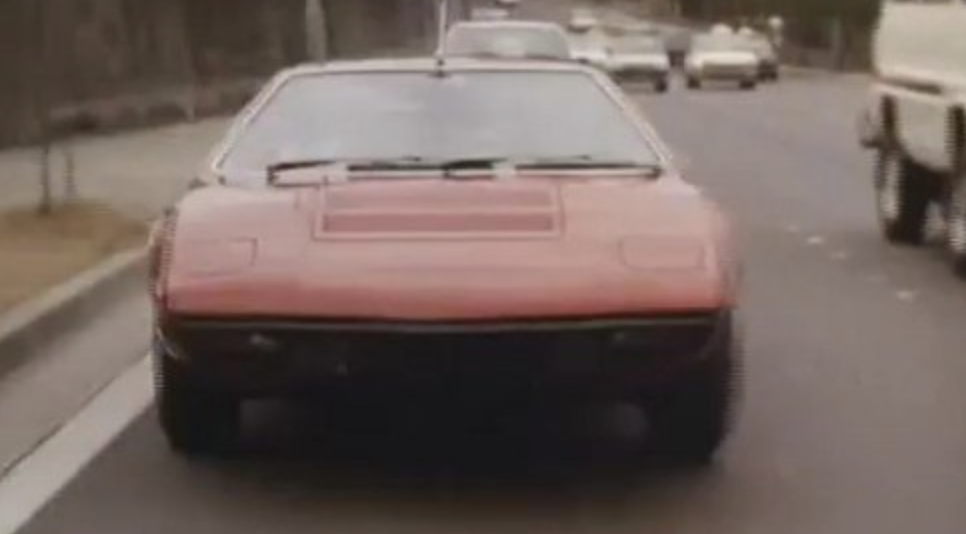
In “The Girl Who Came Late” the inclusion of the 1976 Lamborghini Urraco P300 offered a glimpse into a more understated yet intriguing chapter of Lamborghini’s history. Designed as a more accessible entry into the sports car market, the Urraco was Lamborghini’s response to the increasing demand for high-performance, mid-engined sports cars, targeting competitors like the Ferrari Dino and the Maserati Merak. Its appearance in cinema juxtaposed its subtler styling and performance against its typically more ostentatious stablemates.
The Urraco P300, standing for 3.0-liter engine, housed a rear-mid mounted V8, a departure from Lamborghini’s traditional V12. This 3.0-liter engine delivered a respectable 265 horsepower, demonstrating Lamborghini’s engineering prowess even with a smaller displacement. The car could accelerate from 0 to 60 mph in around 5.6 seconds, a commendable performance for its time and class. Notably, the Urraco P300 featured an independent suspension setup, ensuring refined handling and a comfortable ride. Design-wise, the Urraco sported clean, angular lines courtesy of Marcello Gandini at Bertone, with a low, wide stance that maintained Lamborghini’s design ethos yet diverged with its less aggressive, more balanced aesthetic. Lamborghini’s choice to venture into a new market segment with the Urraco, particularly with a smaller V8 and distinct design approach, underscored their versatility and adaptive nature within the sports car industry. The Urraco P300 thus remains a significant, albeit somewhat understated, vehicle in the Lamborghini narrative, representing both a stylistic and mechanical diversity.
5. Toys (1992): 1989 Lamborghini LM002
In the 1992 film “Toys” the presence of the 1989 Lamborghini LM002 added a rugged yet exotic flavor, diverging significantly from Lamborghini’s usual lineup of sleek sports cars. The LM002 was Lamborghini’s adventurous foray into the world of high-performance off-road vehicles, often referred to as the “Rambo Lambo” for its aggressive, militaristic styling and brute force. This vehicle stood as a bold statement of versatility and engineering prowess, offering something distinctly different from the typical supercar narrative.
At the heart of the LM002 was a massive 5.2-liter V12 engine, borrowed from the Countach, producing around 450 horsepower. This power unit, combined with a four-wheel-drive system, enabled the LM002 to tackle challenging terrains while maintaining impressive speeds, a unique characteristic in the realm of luxury off-roaders. Its ability to accelerate from 0 to 60 mph in about 7.7 seconds and reach a top speed of around 118 mph (190 km/h) was remarkable, considering its considerable size and weight. The LM002 also featured a luxurious interior, balancing its rugged external persona with a level of comfort and opulence inside, including full leather upholstery, air conditioning, and premium audio systems. The blend of a powerful Countach engine, an imposing exterior design, and a surprisingly luxurious interior made the LM002 an intriguing and unconventional chapter in Lamborghini’s history. It stood not only as a testament to the brand’s engineering capabilities but also as a symbol of the adventurous spirit that defines Lamborghini.
6. Dragon: The Bruce Lee Story (1993): 1966 Lamborghini 400 GT 2+2
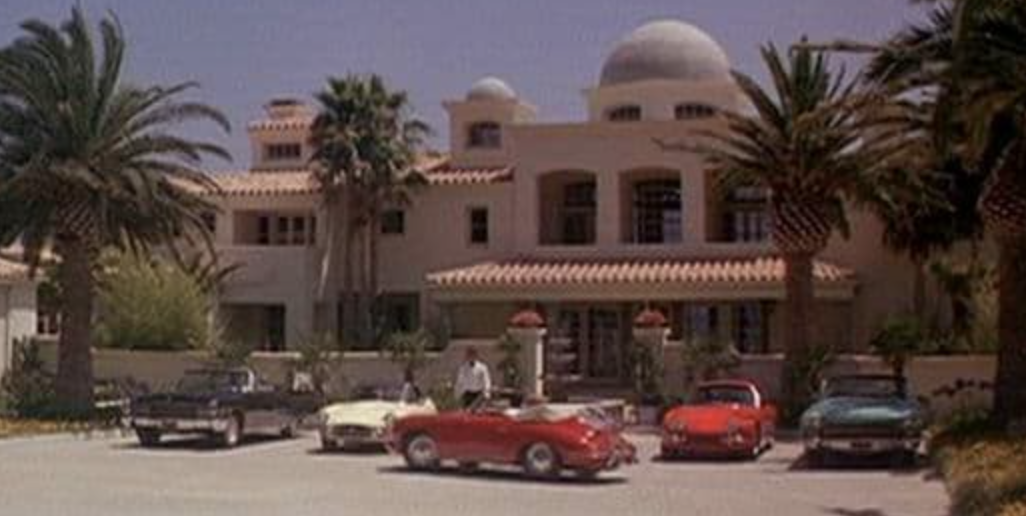
The 1966 Lamborghini 400 GT 2+2 featured in “Dragon: The Bruce Lee Story” provided a glimpse of classic Italian elegance, showcasing a different side of Lamborghini’s character compared to the more radical models commonly seen in movies. This grand tourer, a successor to the earlier 350 GT, was a fine example of Lamborghini’s early exploration into combining high performance with luxury and practicality. With its refined styling, the 400 GT 2+2 offered a more subdued and classic aesthetic, appealing to those who valued understated elegance alongside powerful performance.
The 400 GT 2+2 was powered by a 4.0-liter V12 engine, an enlarged version of the 350 GT’s 3.5-liter powerplant, and it produced approximately 320 horsepower. This engine allowed the car to achieve a top speed of around 155 mph (250 km/h), putting it on par with the top sports cars of its era. Distinguished by its roomier interior to comfortably seat four, the 400 GT 2+2 featured a longer wheelbase than its predecessor and included minor exterior changes like a redesigned front grille and dual headlamps. The interior reflected Lamborghini’s commitment to luxury, with rich leather upholstery and wooden accents. Despite being a more practical and less ostentatious model, the 400 GT 2+2 maintained the performance characteristics Lamborghini was known for. Its combination of a smooth V12 engine, elegant design, and enhanced practicality showcased a different facet of the Lamborghini brand, one that balanced the thrill of driving with everyday usability and comfort.
7. Dumb & Dumber (1994): 1991 Lamborghini Diablo
In the 1994 comedy “Dumb & Dumber” the 1991 Lamborghini Diablo played a memorable role, capturing attention with its dramatic styling and raw power, emblematic of Lamborghini’s design ethos during the early ’90s. The Diablo, which succeeded the iconic Countach, carried forward the tradition of bold, aggressive design and top-tier performance. It was a symbol of the era’s supercar: a combination of high speed, cutting-edge technology, and an audacious aesthetic that pushed the boundaries of automotive design.
The Diablo, powered by a 5.7-liter V12 engine, was a powerhouse, churning out about 492 horsepower. This formidable engine enabled the car to reach 0 to 60 mph in just over 4 seconds, with a top speed of 202 mph (325 km/h), making it one of the fastest production cars available at the time. Its rear-wheel-drive layout and lack of driver aids like power steering or ABS in the early models underscored the raw, unadulterated driving experience Lamborghini aimed for. The vehicle’s scissor doors, wide stance, and low profile, combined with its ability to deliver thrilling speed, underscored the Diablo’s status as a quintessential supercar of its time. The presence of such a car in “Dumb & Dumber” not only added a layer of extravagance to the film but also paid homage to the unapologetic opulence and technical prowess of Lamborghini during the early 1990s.
8. Fair Game (1994): 1967 Lamborghini Miura P400
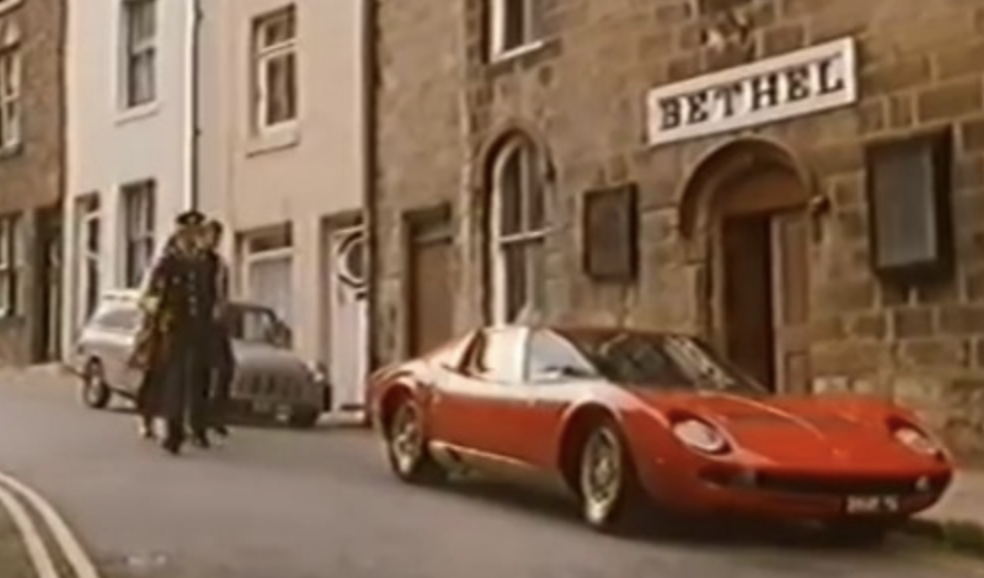
In the action film “Fair Game” the 1967 Lamborghini Miura P400 added a layer of classic Italian sports car glamour, exemplifying the revolutionary design and engineering of its era. The Miura, often celebrated as one of the first true supercars, set new benchmarks in the automotive world with its mid-engine layout, which would become a standard for high-performance sports cars. Its appearance on screen reinforced the Miura’s status as a symbol of 1960s automotive passion and innovation.
The heart of the Miura P400 was its transversely mounted 3.9-liter V12 engine, delivering around 350 horsepower. This placement of the engine was groundbreaking, enhancing the vehicle’s balance and handling. With a top speed of approximately 174 mph (280 km/h) and the ability to sprint from 0 to 60 mph in 6.7 seconds, the Miura was one of the fastest production cars of its time. Its beautifully sculpted body, designed by Marcello Gandini of Bertone, was characterized by its sleek lines and pop-up headlights, a design that drastically diverged from Lamborghini’s more angular creations that followed. The Miura P400’s combination of innovative engineering, breathtaking performance, and timeless design aesthetics underscored Lamborghini’s position as a creator of extraordinary, groundbreaking automobiles.
9. I Like It Like That (1994): 1984 Lamborghini Jalpa
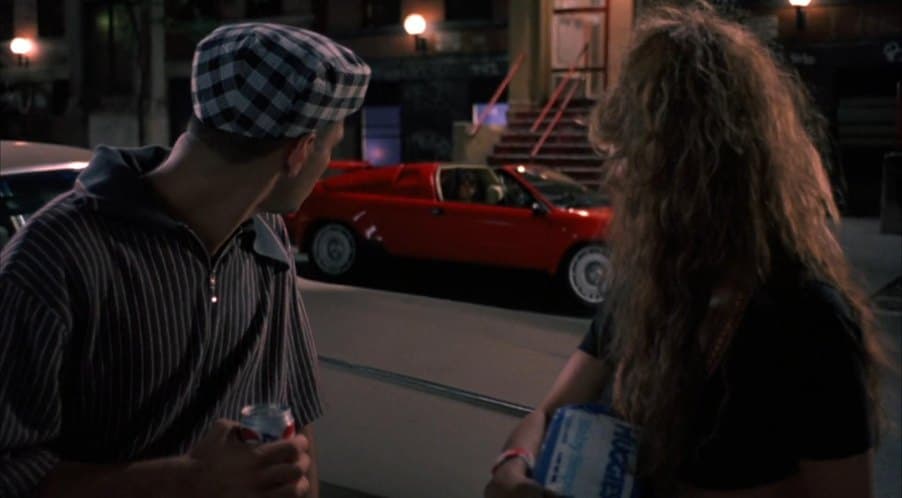
The 1984 Lamborghini Jalpa, featured in “I Like It Like That” showcased a different, perhaps more accessible aspect of Lamborghini’s range during the 1980s. As a more compact and less intimidating alternative to the flagship Countach, the Jalpa was aimed at a slightly different market, one that appreciated the Lamborghini allure but desired a more practical and manageable driving experience.
Powering the Jalpa was a 3.5-liter V8 engine, which produced about 255 horsepower. This output was certainly modest compared to the V12 giants in Lamborghini’s lineup but still provided ample performance, with a top speed of 155 mph (250 km/h) and acceleration from 0 to 60 mph in around 6 seconds. One of the Jalpa’s key features was its targa top, offering a more open-air driving experience, which was quite popular in sports cars of that period. Its design, while still bearing the sharp lines typical of Lamborghini’s style, was somewhat toned down, resulting in a vehicle that blended sports car aggression with a degree of subtlety and day-to-day usability. The Jalpa, thus, not only expanded Lamborghini’s repertoire in terms of style and performance but also demonstrated the brand’s ability to adapt and appeal to a broader audience, combining the essence of Lamborghini’s performance with a degree of practicality and comfort.
10. The First Wives Club (1996): 1993 Lamborghini Diablo VT
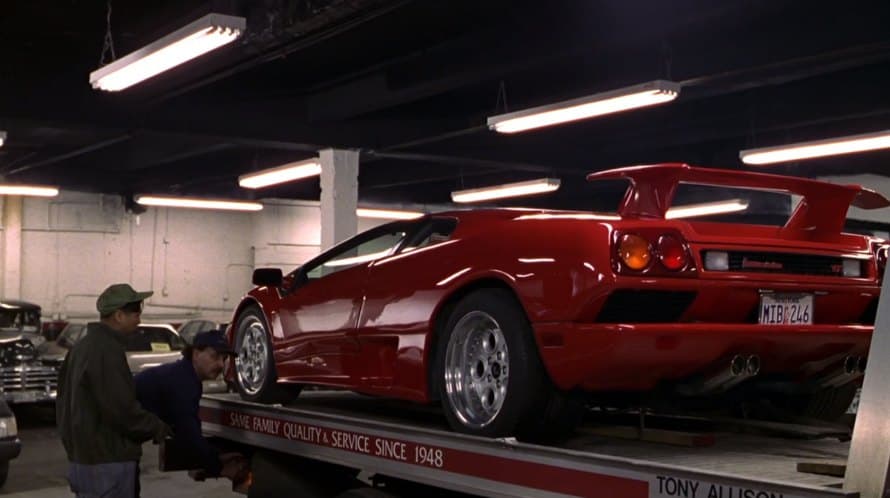
In “The First Wives Club” the 1993 Lamborghini Diablo VT featured prominently, exemplifying the evolution of Lamborghini’s engineering and design philosophies in the early 90s. The Diablo VT (“Viscous Traction”) represented a significant advancement from the original Diablo, introducing Lamborghini’s first venture into all-wheel-drive systems. This addition marked a pivotal point in Lamborghini’s approach to enhancing performance through technological innovation.
The Diablo VT was equipped with a 5.7-liter V12 engine, capable of producing around 492 horsepower, similar to the base Diablo. However, its all-wheel-drive system, which could redirect up to 25% of the torque to the front wheels, significantly improved the car’s handling and traction, particularly in challenging driving conditions. The VT also featured several design modifications over its predecessor, including revised front and rear bumpers, a more prominent rear wing, and power steering as standard – enhancements that not only improved functionality but also subtly updated the vehicle’s aesthetic. Its performance stats remained staggering, with the ability to accelerate from 0 to 60 mph in just over 4 seconds, maintaining the Diablo’s reputation as a supercar of formidable capabilities. The inclusion of the Diablo VT in the film added a layer of contemporary luxury and cutting-edge technology, showcasing Lamborghini’s relentless pursuit of perfection in the realm of high-performance sports cars.
11. Dobermann (1997): 1988 Lamborghini Countach Anniversary
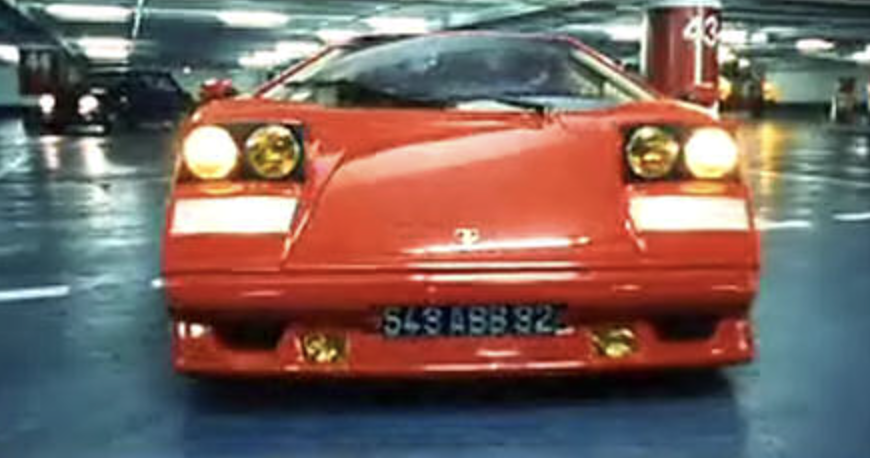
The 1988 Lamborghini Countach Anniversary model, seen in “Dobermann” stood as a testament to Lamborghini’s long-standing heritage in creating striking supercars. Released to commemorate the company’s 25th anniversary, this model was an enhancement of the classic Countach design, refined and updated by Horacio Pagani – who would later become renowned for founding Pagani Automobili. This special edition was more than just a tribute; it was a statement of the brand’s enduring charisma and engineering innovation.
Underneath its bold and angular exterior, the Anniversary edition was powered by the same 5.2-liter V12 engine as found in the Countach 5000 QV, producing about 455 horsepower. It featured several aesthetic and aerodynamic upgrades over its predecessors, including new front and rear bumpers, more efficient air intakes, and a redesigned engine cover, all aimed at refining the car’s already formidable performance and aggressive stance. With a top speed of around 183 mph (295 km/h) and the ability to accelerate from 0 to 60 mph in about 4.7 seconds, the Countach Anniversary edition remained a strong performer on the road. Its distinct design, with sharply creased lines and iconic scissor doors, continued to encapsulate the essence of Lamborghini’s bold approach to supercar design. This model, symbolizing both a nod to the past and a step towards the future, perfectly encapsulated the innovative spirit and the daring aesthetics that have defined Lamborghini’s legacy.
The representation of Lamborghini cars in ’90s movies offers not just a glimpse into the aesthetic and engineering philosophy of the time, but also a narrative of automotive evolution. Each model, from the Miura to the Diablo, tells a story of design challenges, technological advancements, and a relentless pursuit of performance. For enthusiasts and casual viewers alike, these appearances are more than just fleeting cameos; they’re an integral part of the tapestry that combines automotive development with cultural expression.

